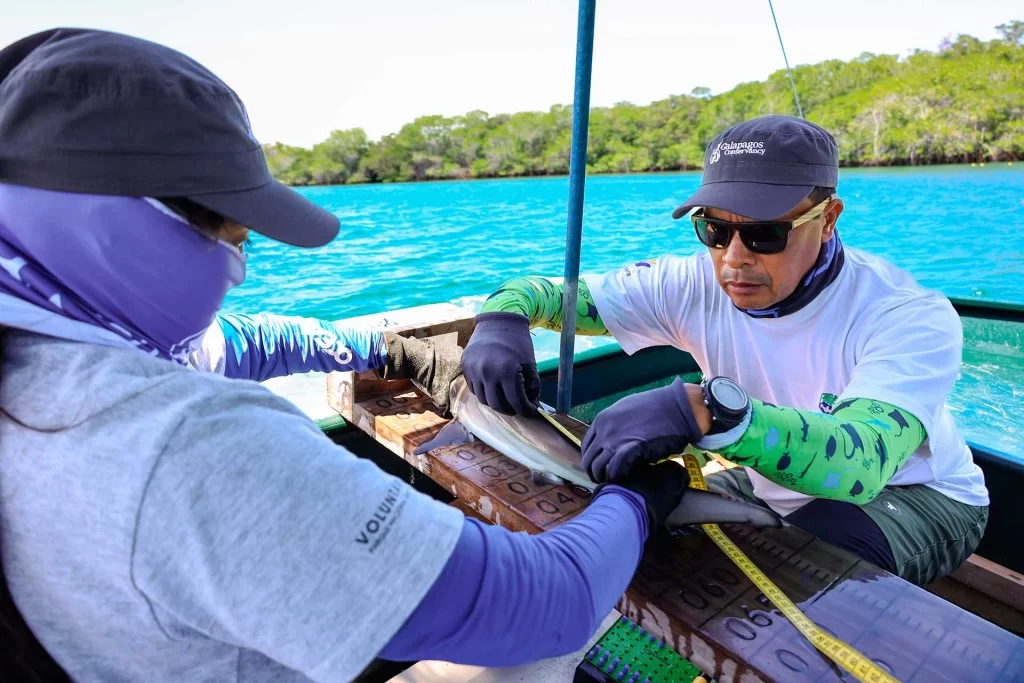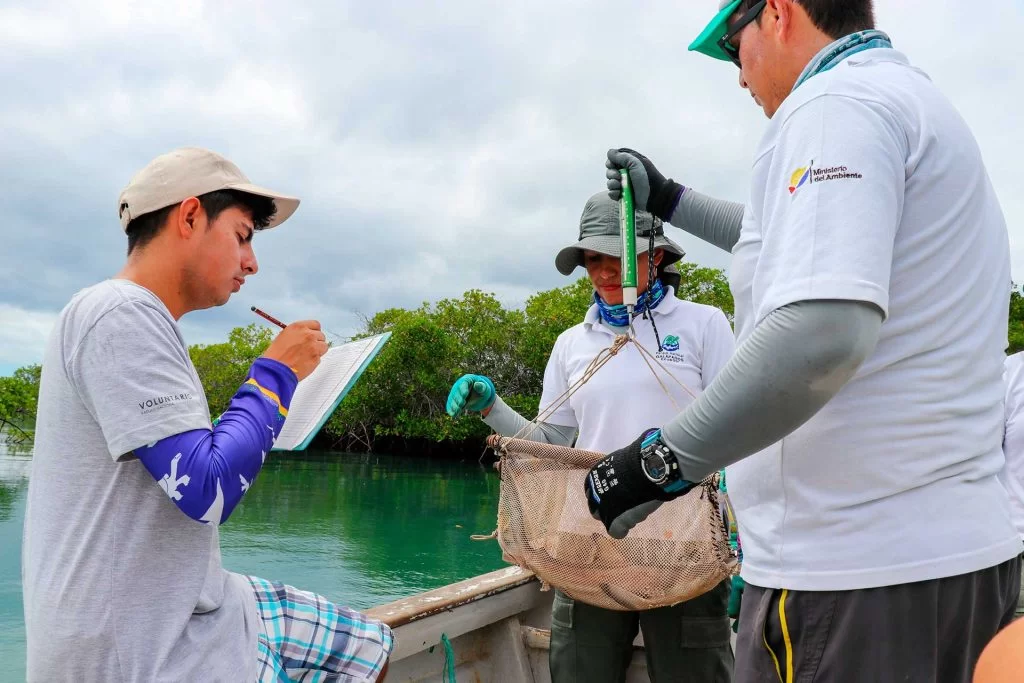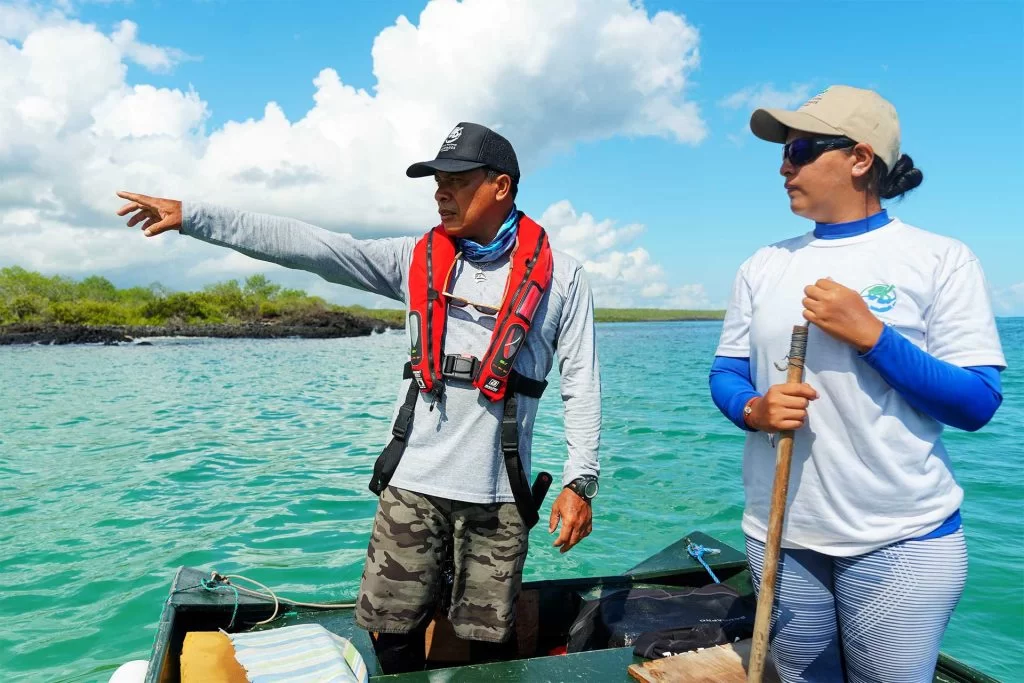Identifying breeding zones to protect
Galapagos Conservancy and the Galapagos National Park Directorate have collaborated on a program that pinpoints shark breeding areas. Caleta Tortuga Negra on Santa Cruz Island, Cartago Chico and Puerto Grande, located respectively on Isabela and San Cristobal Islands, have been identified by scientists as breeding grounds for blacktip sharks (Carcharhinus limbitus) or hammerheads (Sphyrnalewini). These bays and coves are where juvenile sharks seek refuge from predators. They also find abundant food. They stay for two years in these areas before venturing out into the open ocean. The program has tracked 385 juveniles sharks since early 2022. This includes 215 males and 153 females. There are also 17 unclassified.
Engaging the Educational Community
The program doesn’t just focus on scientific monitoring. Galapagos Conservancy has supported the Galapagos National Park Directorate in incorporating an important educational component. Students from different institutions were able to participate in the project and weigh, measure and tag young sharks. The hands-on activity, combined with the guidance of environmental educators, provided knowledge on the importance of sharks and the ongoing conservation effort to protect this endangered species.
[one_second]

With precision and care, the research team measures and tags a juvenile shark in a unique educational experience. ©Galápagos Conservancy
[/one_second]
Galapagos Marine Reserve Gems
Nature lovers can encounter these majestic creatures on a trip to Galapagos, home to the highest concentration of sharks in the world, by diving, snorkeling or taking a panga. The monitoring program emphasizes the importance and value of marine conservation, and aims to educate and engage the next generation on protecting our natural heritage. We can only ensure the future of the Galapagos Archipelago, and its underwater treasures, by understanding and respecting each species’s role within an eco-system.

Enthusiastic young people are actively involved in shark monitoring and conservation in Galápagos. Through hands-on education, they are contributing to the protection of these endangered species. ©Galápagos Conservancy



